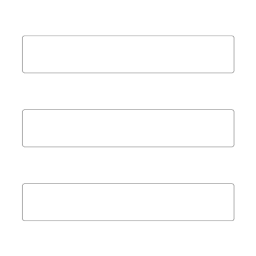Why Personal Blogging is More Than Just a Hobby and Can Lead to Financial Freedom
Introduction: Personal Blogging as a Means to Financial Independence
Blogging has become one of the most popular forms of self-expression online. It provides an opportunity for people to share their thoughts, experiences, and expertise with the world. But did you know that personal blogging can also lead to financial independence?
Gone are the days when blogging was considered just a hobby. Today, many bloggers are earning a full-time income from their blogs. With the right strategies and tools, you too can turn your personal blog into a profitable business.
But how exactly can personal blogging lead to financial freedom? First, let’s take a look at some of the benefits of blogging:
- Blogging allows you to share your ideas and expertise with a global audience.
- You can build a strong personal brand and establish yourself as an authority in your niche.
- You can connect with like-minded individuals and build a community around your blog.
- You have the freedom to work from anywhere in the world and set your own schedule.
Now, let’s talk about how you can monetize your blog and turn it into a source of income. One of the most popular ways to monetize a blog is through advertising. Google AdSense is a popular advertising program that allows bloggers to earn money by displaying ads on their website. You can also earn money through affiliate marketing, sponsored posts, and selling digital products like ebooks and courses.
But before you can start monetizing your blog, you need to choose a profitable niche and build a strong brand. This involves identifying your target audience, creating high-quality content, and promoting your blog through social media and other channels.
In the next sections of this article, we’ll dive deeper into these topics and provide strategies for increasing traffic, engagement, and revenue on your blog. We’ll also share real-life success stories of bloggers who have turned their personal blogs into thriving businesses.
So, if you’re looking for a way to achieve financial independence and turn your passion into a profitable business, personal blogging may be just the opportunity you’ve been looking for. Let’s get started!
How to Choose a Profitable Niche for Your Blog
Choosing a niche for your blog is a crucial step in building a successful blog. Your niche should be something you are passionate about and knowledgeable in, but it should also have the potential to be profitable. Here are some tips to help you choose a profitable niche:
1. Identify your passions and interests: Start by making a list of topics that you are passionate about. This could be anything from cooking to fashion to technology. Choose a niche that you are genuinely interested in, as this will make it easier for you to create high-quality content.
2. Research market demand: Once you have identified your passions, research the market demand for those topics. You can use tools like Google Trends and Ubersuggest to see how many people are searching for those topics online.
3. Analyze competition: Look at other blogs in your niche and analyze their content, audience, and monetization strategies. This will help you identify gaps in the market and find ways to differentiate yourself from the competition.
4. Consider profitability: Some niches are more profitable than others. For example, niches like personal finance and health and wellness tend to be more profitable than niches like poetry or personal journaling. Consider the potential for monetization when choosing your niche.
5. Narrow down your niche: Once you have identified your passions, researched market demand, analyzed competition, and considered profitability, it’s time to narrow down your niche. Try to be as specific as possible when choosing your niche. For example, instead of a “health and wellness” blog, you could focus on “plant-based diets for beginners.”
Choosing a profitable niche for your blog is just the first step in building a successful blog. Once you have chosen your niche, it’s important to focus on creating high-quality content, building a strong brand, and promoting your blog through social media and other channels. In the next sections of this article, we’ll dive deeper into these topics and provide strategies for growing your blog and monetizing your content.
Building a Strong Brand and Growing Your Audience
Building a strong brand is essential for growing your audience and establishing your blog as a reputable source of information in your niche. Your brand should reflect your personality and values, and it should resonate with your target audience. Here are some tips for building a strong brand for your blog:
1. Define your brand identity: Your brand identity includes your blog’s name, logo, tagline, and overall visual style. Make sure that your brand reflects your niche and target audience. For example, if your blog is about travel, your brand should have a travel-inspired look and feel.
2. Develop your brand voice: Your brand voice is how you communicate with your audience. It includes your writing style, tone, and personality. Develop a brand voice that aligns with your brand identity and resonates with your target audience.
3. Create high-quality content: Your content is a reflection of your brand. Make sure that your content is high-quality, informative, and engaging. Use images, videos, and other multimedia elements to enhance your content and make it more appealing to your audience.
4. Engage with your audience: Engage with your audience through social media, email newsletters, and comments on your blog. Respond to their comments and questions, and show them that you appreciate their support.
5. Collaborate with other bloggers: Collaborating with other bloggers in your niche can help you reach a wider audience and establish yourself as an authority in your niche. Look for opportunities to guest post on other blogs or collaborate on a project with other bloggers.
6. Use social media to promote your brand: Social media is a powerful tool for promoting your brand and growing your audience. Choose the social media platforms that are most relevant to your niche and target audience, and create a consistent brand presence across all platforms.
By building a strong brand, you can establish yourself as an authority in your niche and attract a loyal following of readers. Once you have a strong brand and audience, you can start monetizing your blog through advertising, affiliate marketing, sponsored posts, and other income streams. In the next sections of this article, we’ll dive deeper into these topics and provide strategies for increasing traffic, engagement, and revenue on your blog.
Monetizing Your Blog with AdSense and Other Income Streams
Monetizing your blog is the key to turning your passion into a profitable business. The most popular way to monetize a blog is through advertising. Google AdSense is a popular advertising program that allows bloggers to earn money by displaying ads on their website. Here are some tips for monetizing your blog with AdSense:
1. Sign up for AdSense: The first step to monetizing your blog with AdSense is to sign up for the program. You’ll need to have a website or blog with high-quality content that meets Google’s guidelines. Once you’re approved, you can start displaying ads on your website.
2. Optimize ad placement: The placement of your ads can have a big impact on your earnings. Place your ads in prominent positions on your website, such as above the fold and within the content. Use responsive ad units that adjust to the size of the user’s screen.
3. Create high-quality content: The quality of your content is key to attracting advertisers and earning more money from AdSense. Create high-quality, informative, and engaging content that keeps your readers coming back for more.
4. Choose the right ad formats: AdSense offers a variety of ad formats, including display ads, text ads, and link units. Experiment with different formats to see which ones perform best on your website.
5. Monitor your performance: Keep an eye on your AdSense performance to see how much money you’re earning and which ads are performing best. Use the AdSense dashboard to track your earnings and optimize your ad placement.
In addition to AdSense, there are other income streams you can explore to monetize your blog. These include affiliate marketing, sponsored posts, and selling digital products. Here are some tips for exploring these income streams:
1. Affiliate marketing: Affiliate marketing involves promoting other people’s products on your blog and earning a commission for each sale. Look for products that are relevant to your niche and have a high commission rate. Include affiliate links in your blog posts and promote them through social media and email newsletters.
2. Sponsored posts: Sponsored posts involve partnering with brands to create content that promotes their products or services. Look for brands that are relevant to your niche and have a good reputation. Make sure that your sponsored posts are clearly labeled as such to comply with FTC guidelines.
3. Selling digital products: Selling digital products like ebooks, courses, and printables can be a lucrative income stream for bloggers. Create high-quality, informative products that are relevant to your niche and promote them through your blog and social media channels.
By diversifying your income streams, you can maximize your earnings and achieve financial independence through your blog
Strategies for Increasing Traffic and Engagement on Your Blog
As a blogger, increasing your traffic and engagement is crucial to your success. The more traffic you get, the higher your chances of monetizing your blog and earning a full-time income. Here are some strategies for increasing traffic and engagement on your blog:
1. Optimize your content for SEO: Search engine optimization (SEO) is the process of optimizing your content for search engines like Google. Choose keywords that are relevant to your niche and include them in your blog post titles, meta descriptions, and content. Use tools like Google Keyword Planner and SEMrush to research keywords and optimize your content.
2. Promote your blog through social media: Social media is a powerful tool for promoting your blog and driving traffic to your website. Choose the social media platforms that are most relevant to your niche and target audience, and create a consistent brand presence across all platforms. Use tools like Hootsuite and Buffer to schedule your social media posts in advance.
3. Guest post on other blogs: Guest posting on other blogs in your niche is a great way to reach a wider audience and establish yourself as an authority in your niche. Look for opportunities to guest post on other blogs or collaborate on a project with other bloggers. Make sure to include a link to your blog in your guest post bio.
4. Use email marketing to promote your blog: Email marketing is a powerful tool for promoting your blog and building a loyal audience. Offer a free resource or incentive in exchange for email sign-ups, and use your email newsletter to promote your blog posts and share exclusive content with your subscribers.
5. Engage with your audience: Engage with your audience through social media, email newsletters, and comments on your blog. Respond to their comments and questions, and show them that you appreciate their support. This will help build a loyal following and increase engagement on your blog.
6. Offer incentives for engagement: Offer incentives for your readers to engage with your content, such as a giveaway or a free resource. Encourage comments and social media shares, and create a sense of community around your blog.
By implementing these strategies, you can increase your traffic and engagement on your blog and build a loyal following of readers. This will ultimately lead to more opportunities for monetizing your blog and achieving financial independence.
Success Stories: Real-Life Examples of Personal Bloggers Earning a Full-Time Income
Personal blogging is no longer just a hobby, but a lucrative business opportunity for many bloggers. Let’s take a look at some real-life success stories of personal bloggers who have turned their passion into a full-time income:
1. Michelle Schroeder-Gardner: Michelle started her personal finance blog, Making Sense of Cents, in 2011 as a hobby. Today, she earns over $100,000 per month from her blog through affiliate marketing, sponsored posts, and her own digital products.
2. Lindsay Ostrom: Lindsay started her food blog, Pinch of Yum, in 2010 as a way to share her recipes with friends and family. Today, she earns over $100,000 per month from her blog through advertising, sponsored content, and her own digital products.
3. Pat Flynn: Pat started his blog, Smart Passive Income, in 2008 to document his journey of building an online business. Today, he earns over $150,000 per month from his blog through affiliate marketing, advertising, and selling his own digital products.
4. Abby Lawson: Abby started her home decor and organization blog, Just a Girl and Her Blog, in 2013 as a creative outlet. Today, she earns over $40,000 per month from her blog through affiliate marketing, sponsored content, and her own digital products.
These success stories show that with the right strategies and tools, personal blogging can lead to financial independence. By choosing a profitable niche, building a strong brand, and monetizing your blog through advertising, affiliate marketing, and other income streams, you too can turn your passion into a profitable business.
But it’s important to remember that building a successful blog takes time, effort, and patience. Don’t expect to see overnight success, and be willing to put in the work to achieve your goals. By following the strategies outlined in this article and learning from the success stories of other bloggers, you can take your personal blog to the next level and achieve financial freedom.














 Over 10 years of experience in managing all size of tech projects.
Over 10 years of experience in managing all size of tech projects.